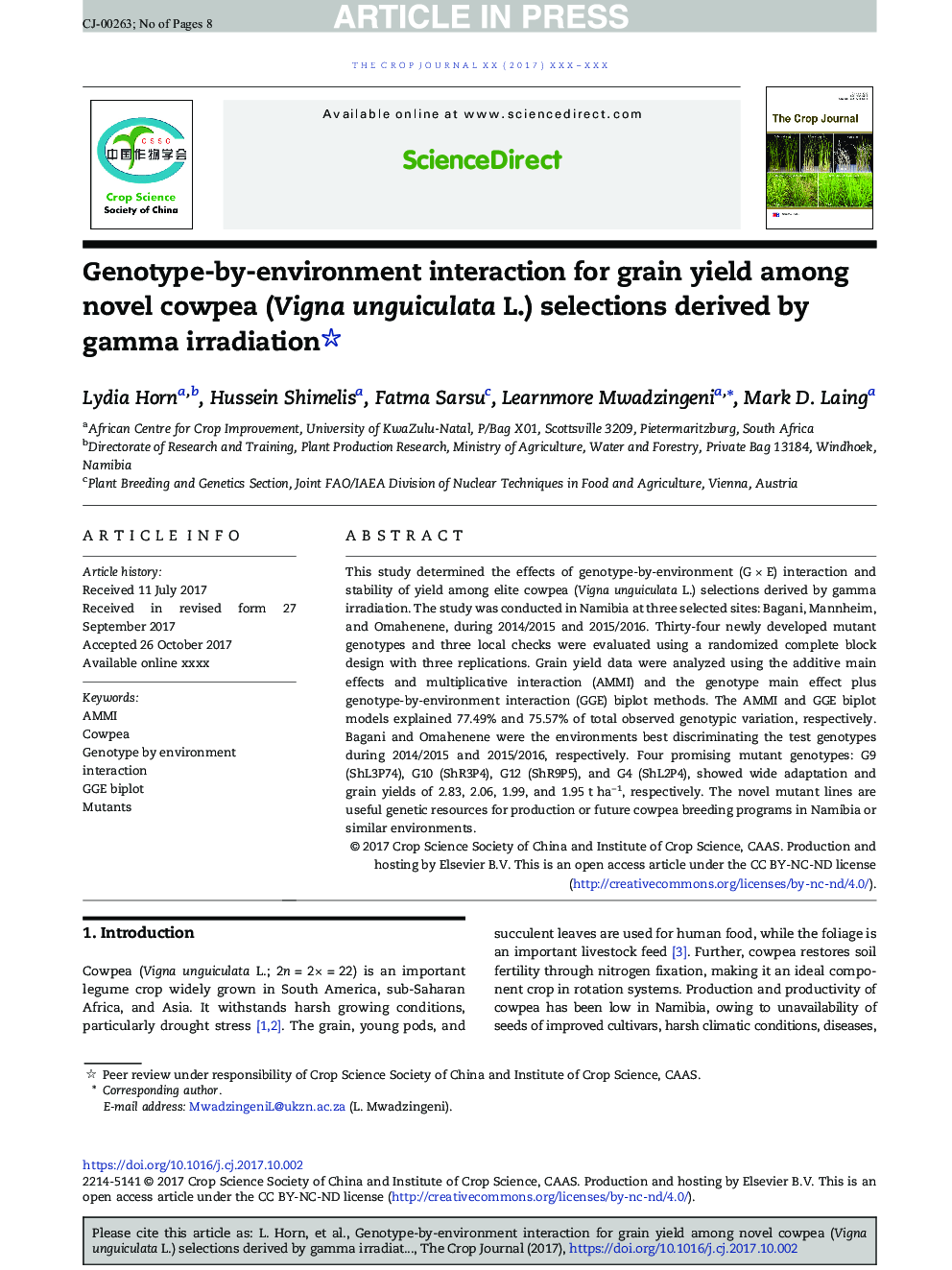| Article ID | Journal | Published Year | Pages | File Type |
|---|---|---|---|---|
| 8408744 | The Crop Journal | 2018 | 8 Pages |
Abstract
This study determined the effects of genotype-by-environment (G Ã E) interaction and stability of yield among elite cowpea (Vigna unguiculata L.) selections derived by gamma irradiation. The study was conducted in Namibia at three selected sites: Bagani, Mannheim, and Omahenene, during 2014/2015 and 2015/2016. Thirty-four newly developed mutant genotypes and three local checks were evaluated using a randomized complete block design with three replications. Grain yield data were analyzed using the additive main effects and multiplicative interaction (AMMI) and the genotype main effect plus genotype-by-environment interaction (GGE) biplot methods. The AMMI and GGE biplot models explained 77.49% and 75.57% of total observed genotypic variation, respectively. Bagani and Omahenene were the environments best discriminating the test genotypes during 2014/2015 and 2015/2016, respectively. Four promising mutant genotypes: G9 (ShL3P74), G10 (ShR3P4), G12 (ShR9P5), and G4 (ShL2P4), showed wide adaptation and grain yields of 2.83, 2.06, 1.99, and 1.95 t haâ 1, respectively. The novel mutant lines are useful genetic resources for production or future cowpea breeding programs in Namibia or similar environments.
Related Topics
Life Sciences
Agricultural and Biological Sciences
Agronomy and Crop Science
Authors
Lydia Horn, Hussein Shimelis, Fatma Sarsu, Learnmore Mwadzingeni, Mark D. Laing,
